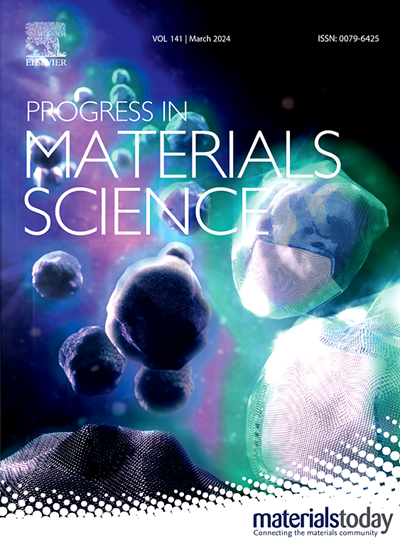MOF membranes for gas separations
IF 33.6
1区 材料科学
Q1 MATERIALS SCIENCE, MULTIDISCIPLINARY
引用次数: 0
Abstract
Metal-organic framework (MOF) membranes have emerged as a breakthrough technology for gas separation, offering unparalleled selectivity and permeability due to their high surface area, tuneable pore size, and versatile chemical functionalities. Encompassing the immense recent progress in the development of MOF-based membranes as supported thin layers as well as mixed matrix membranes (MMMs), this review is focussed on recent developments such as electrodeposition, use of glassy MOFs, two-dimensional (2D) MOF nanosheets and use of artificial intelligence (AI) to assist in the design of MOF membranes. Each type of MOF membrane presents unique advantages: polycrystalline membranes excel in molecular sieving, thin-film composite membranes provide enhanced gas permeance, MMMs combine MOF properties with polymer flexibility, and MOF glass membranes offer exceptional stability under harsh conditions. The comprehensive development of MOF membranes promises to revolutionize gas separation technologies, significantly contributing to environmental sustainability and economic efficiency. Finally, future advances in MOF membranes will focus on improving stability, scalability, and integration into industrial processes, with key research areas including improving chemical and thermal stability, developing scalable synthesis methods, and employing AI and machine learning for material optimization.
用于气体分离的 MOF 膜
金属有机框架膜(MOF)已成为气体分离领域的一项突破性技术,由于其高表面积、可调孔径和多种化学功能,具有无与伦比的选择性和渗透性。本文综述了近年来MOF基膜作为支撑薄层和混合基质膜(MMMs)的巨大进展,重点介绍了电沉积、玻璃状MOF的使用、二维MOF纳米片的使用以及人工智能(AI)在MOF膜设计中的应用。每种类型的MOF膜都具有独特的优势:多晶膜擅长分子筛分,薄膜复合膜提供增强的气体渗透性,mm结合了MOF特性和聚合物柔韧性,MOF玻璃膜在恶劣条件下具有卓越的稳定性。MOF膜的全面发展有望彻底改变气体分离技术,显著促进环境可持续性和经济效益。最后,MOF膜的未来发展将集中在提高稳定性、可扩展性和集成到工业过程中,重点研究领域包括提高化学和热稳定性、开发可扩展的合成方法,以及利用人工智能和机器学习进行材料优化
本文章由计算机程序翻译,如有差异,请以英文原文为准。
求助全文
约1分钟内获得全文
求助全文
来源期刊

Progress in Materials Science
工程技术-材料科学:综合
CiteScore
59.60
自引率
0.80%
发文量
101
审稿时长
11.4 months
期刊介绍:
Progress in Materials Science is a journal that publishes authoritative and critical reviews of recent advances in the science of materials. The focus of the journal is on the fundamental aspects of materials science, particularly those concerning microstructure and nanostructure and their relationship to properties. Emphasis is also placed on the thermodynamics, kinetics, mechanisms, and modeling of processes within materials, as well as the understanding of material properties in engineering and other applications.
The journal welcomes reviews from authors who are active leaders in the field of materials science and have a strong scientific track record. Materials of interest include metallic, ceramic, polymeric, biological, medical, and composite materials in all forms.
Manuscripts submitted to Progress in Materials Science are generally longer than those found in other research journals. While the focus is on invited reviews, interested authors may submit a proposal for consideration. Non-invited manuscripts are required to be preceded by the submission of a proposal. Authors publishing in Progress in Materials Science have the option to publish their research via subscription or open access. Open access publication requires the author or research funder to meet a publication fee (APC).
Abstracting and indexing services for Progress in Materials Science include Current Contents, Science Citation Index Expanded, Materials Science Citation Index, Chemical Abstracts, Engineering Index, INSPEC, and Scopus.
 求助内容:
求助内容: 应助结果提醒方式:
应助结果提醒方式:


